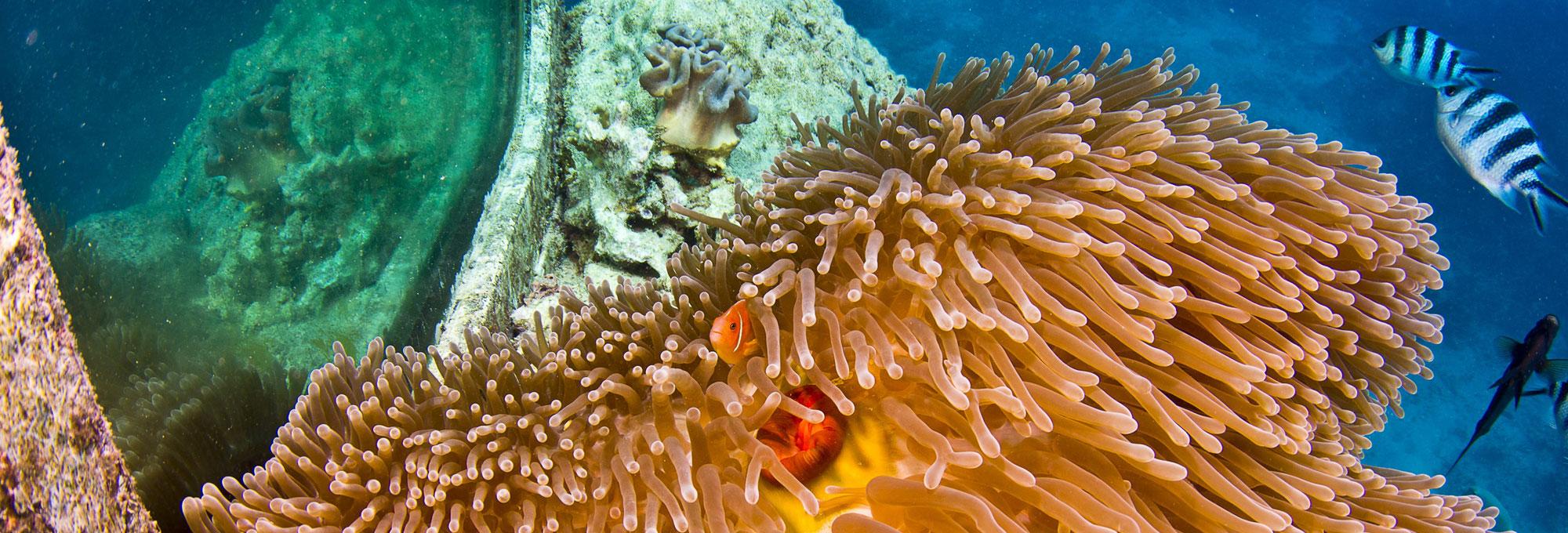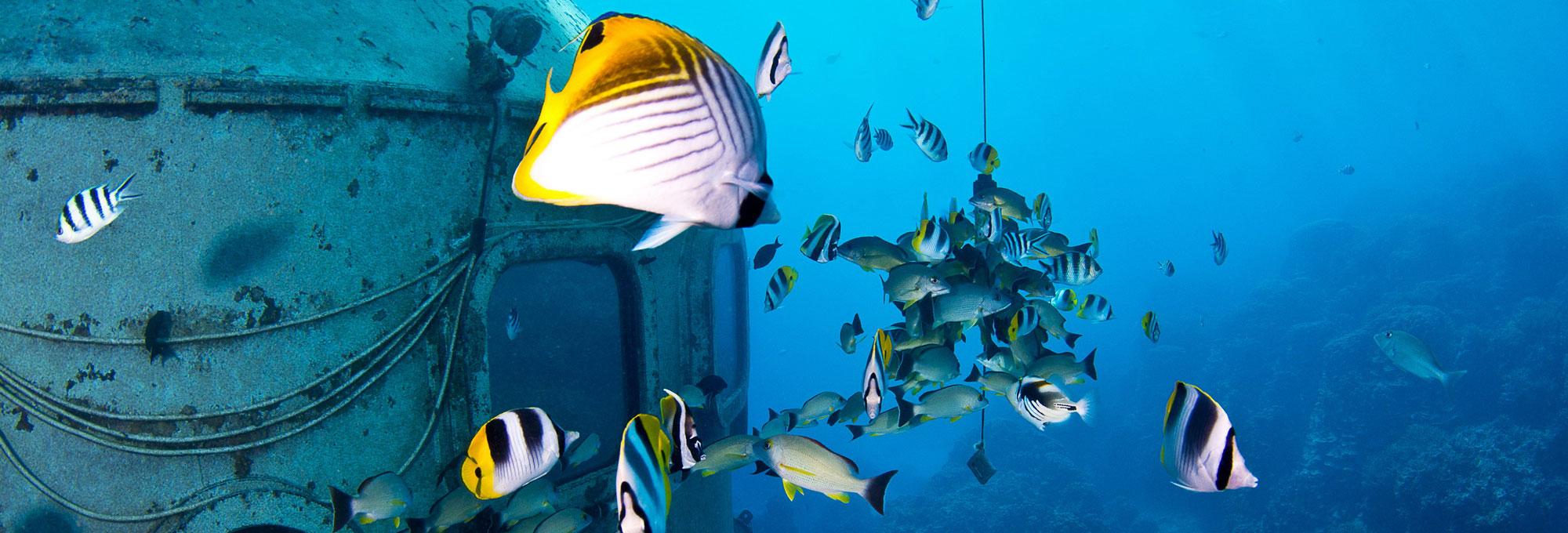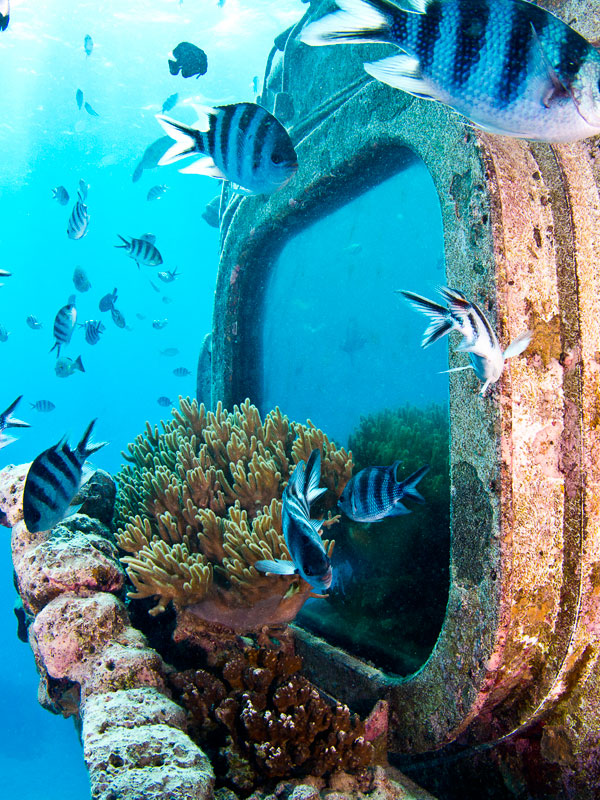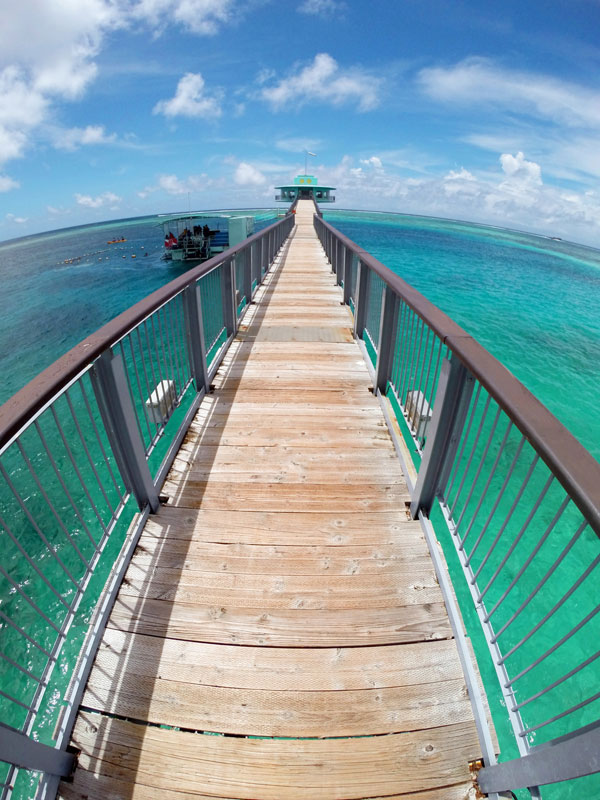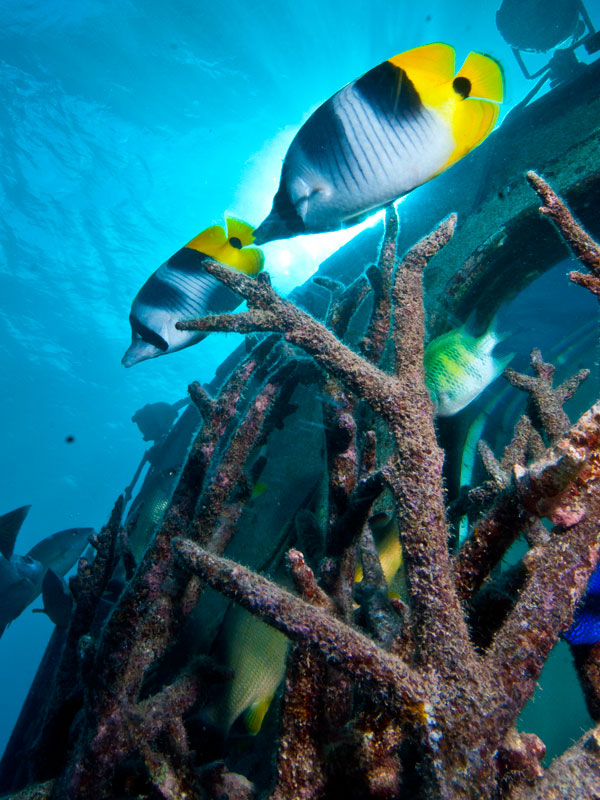Welcome to the natural pristine beauty of the undersea world!
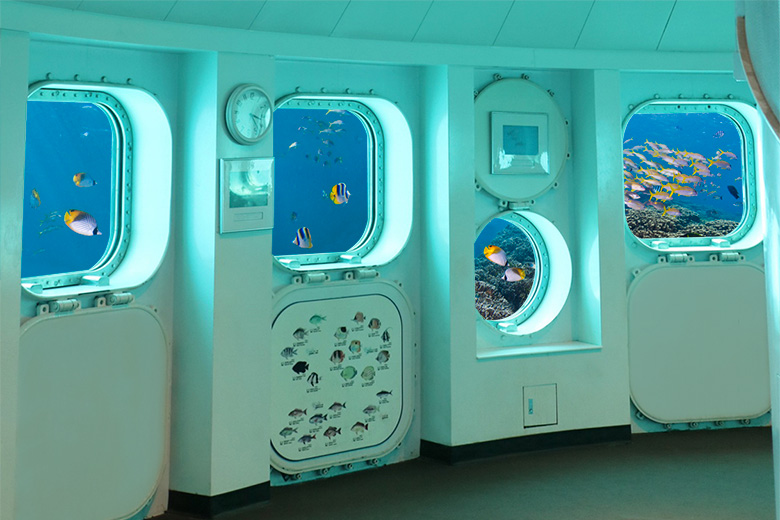
The view from the underwater observatory is highly recommended, not to mention the view from the upper deck of Piti Bay's gorgeous and varied colors. This is the unique observatory where both the undersea and surface of the ocean may be seen and enjoyed.
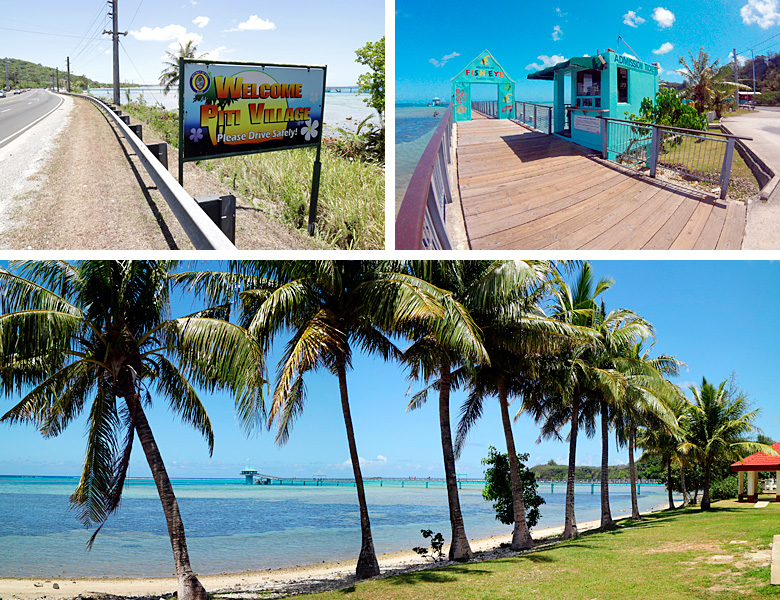
Right after the "Welcome to Piti Village" sign on Marine Drive lies the entrance to the underwater observatory. Before stepping out onto the bridge walkway to enjoy the stunning ocean, admission tickets may be purchased at the front ticket office.

The gentle sea breeze caresses you as you walk and enjoy the unique colors of the sea and coral reef from the bridge walkway. The color of the ocean which varies from emerald green at the shallow points to a stunning coral blue at the deeper parts is beyond description. The sunset on Guam is amazingly picturesque due to the pristine air surrounding the island.

The fish and coral in the sea can be viewed from the exterior upper deck of the underwater observatory due to the superb visibility of the water.
It is fun to watch the migratory fish feeding and swimming in the water!
A monitor TV is a set-up to view the underwater via live video feed.
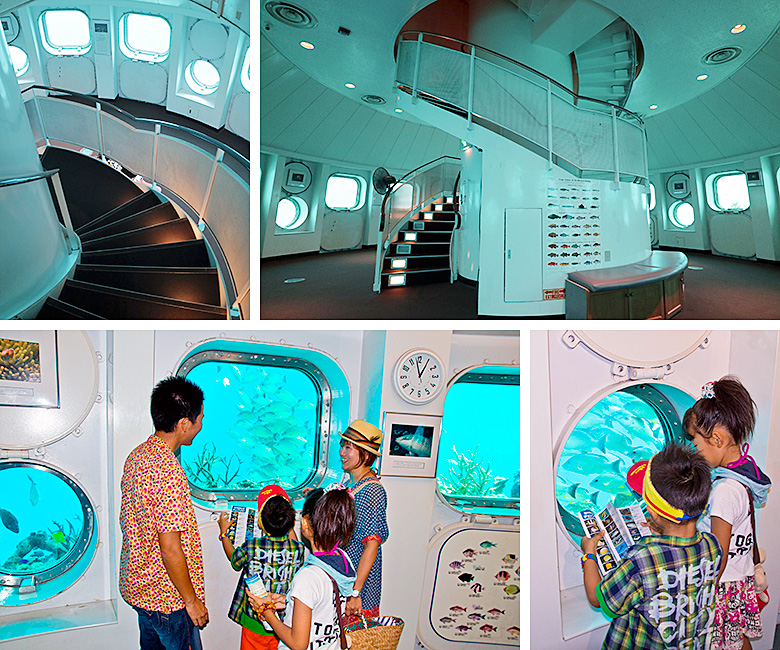
Descend 72 steps down the spiral staircase to the lower deck located at a depth of 10 meters underwater. A fantastic 360˚ view from the underwater observatory can be enjoyed from 16 large observation windows in addition to 8 round windows located at a height perfect for smaller children.
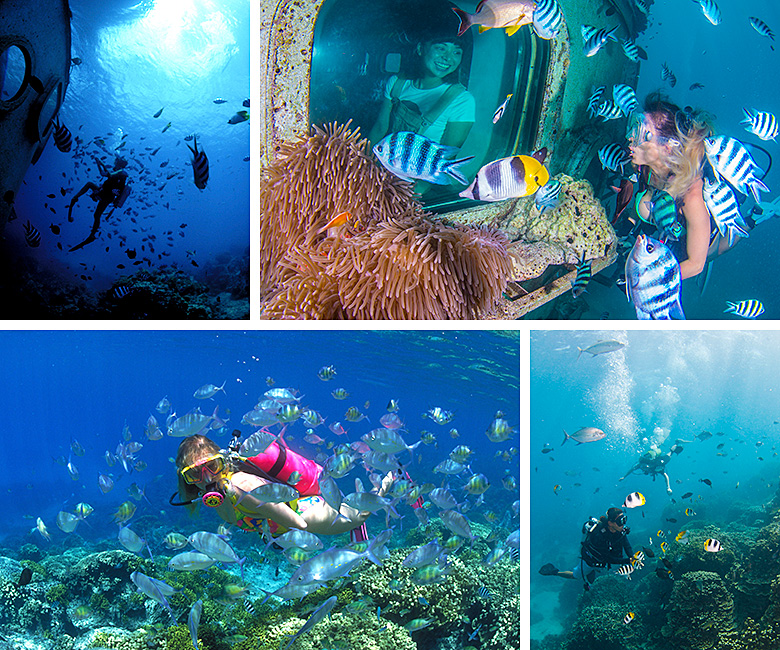
The natural coral surrounding the underwater observatory makes it a very popular diving spot that many divers visit every day.
The number of fishefishing the divers to play is quite astonishing.

Barracuda (Sphyraena barracuda) and schools of needlefish (Hyporhamphus sp.) may be seen from the south side of the underwater observatory, close to the sea bridge. Bluefin trevally (Caranx melamphygus) and unicorn fish (Naso unicornis) are often swimming in the mid-depths of the water. Sting rays (Aetobatus narinari) and blacktip sharks (Carcharhinus melanopterus) usually appear in the evening hours when the sea is free from divers and other human spectators.
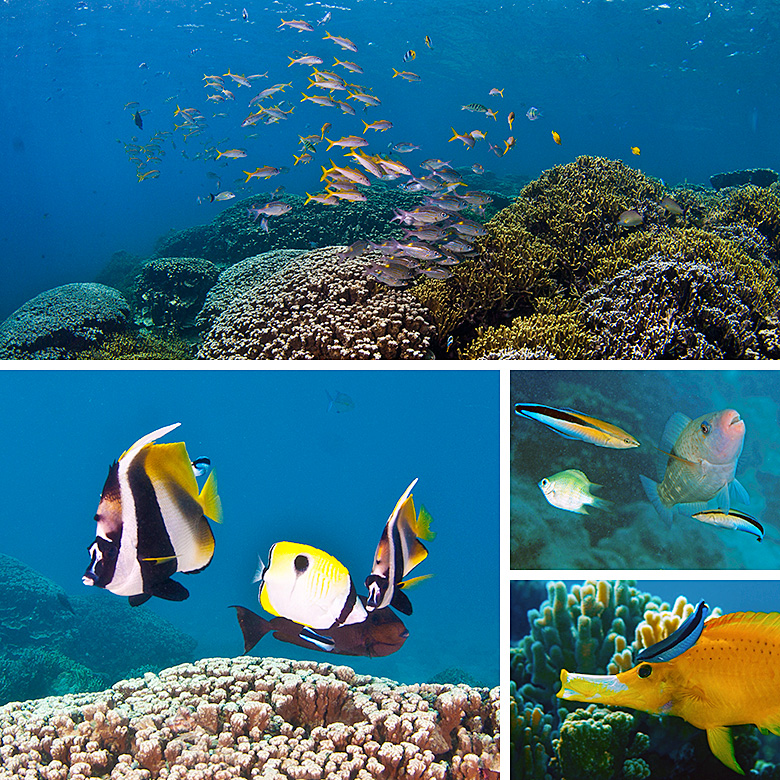
The main attraction of the west side is the colorful fishes that swim between the corals that have grown to border the underwater observatory and the fish cleaning station. (*)
*Cleaning Station*
A coral or rock stationed by a cleaner wrasse (L. dimidiatus) that eats the parasites and other bodies wasted off the other visiting fishes is referred to as a fish cleaning station. It is amusing to watch the fishes waiting their turn to have their bodies cleaned.
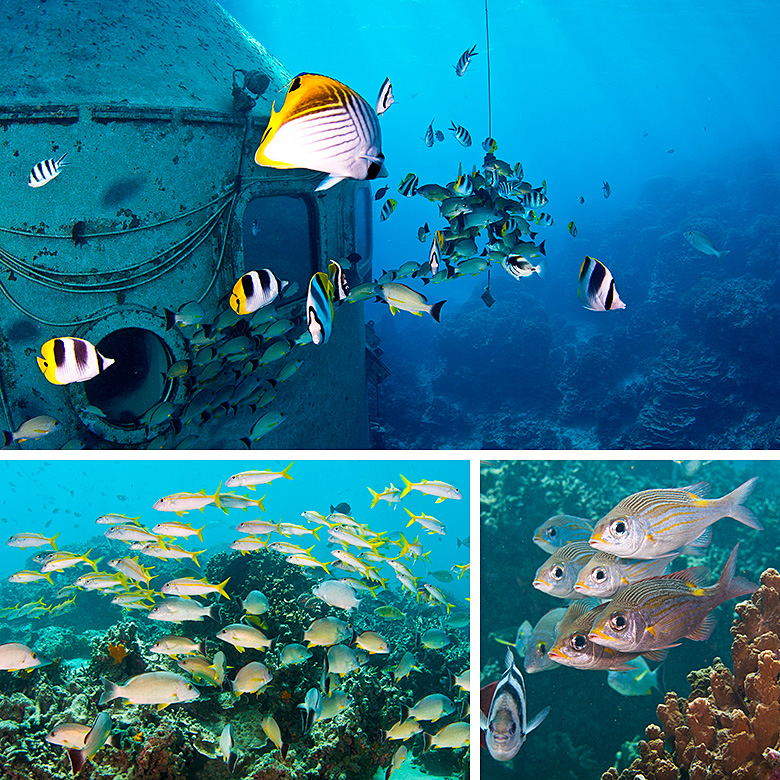
The main attraction of the northwest side is the fishes that gather around the feeding station and the school of goatfish (Mulloidichthys vanicolensis) and snapper (Lutjanus fulvus) that leisurely swim in the shade provided by the underwater observatory.
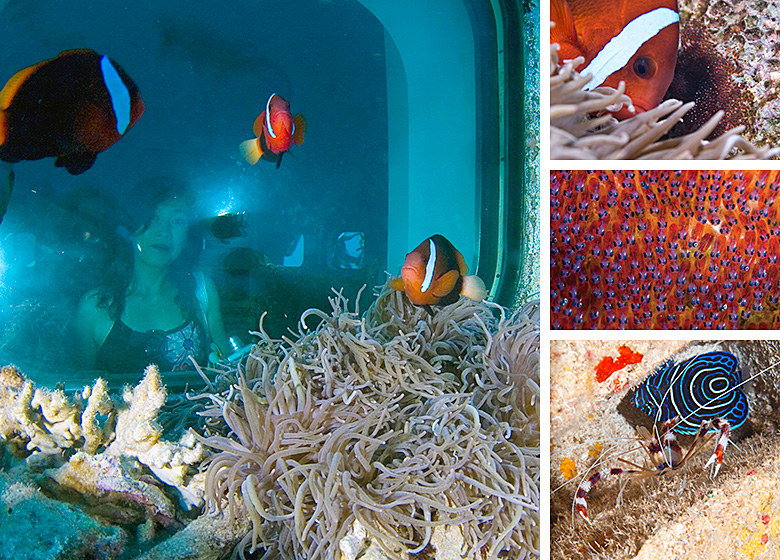
Anemone fish (Amphiprion melanous) living symbiotically with sea anemones are seen on the artificial coral shelf located on the northeast side of the observatory. Occasionally the males can be seen dutifully protecting the newly laid eggs.

From the east side window, you can view the pink anemonefish (Amphiprion perideraion) and damselfish (Chromis Viridis) swimming around the artificial coral shelves mounted by the underwater observatory window.
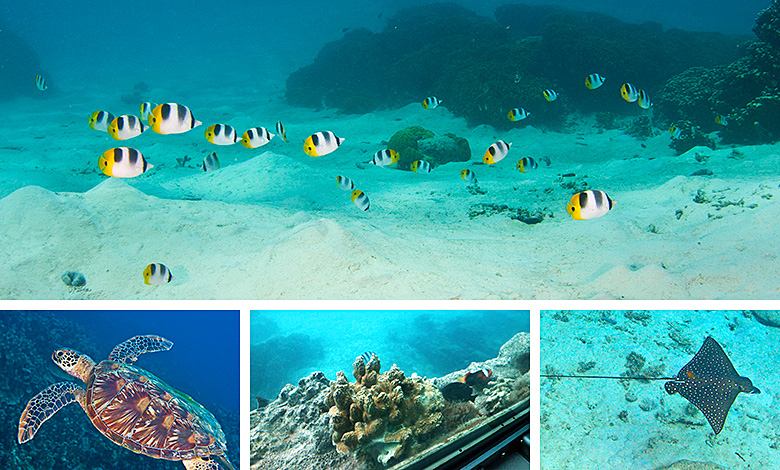
From the southeast side of the underwater observatory, you can see the sandstone spreading underneath the artificial coral shelf where turtles and stingrays (Aetobatus narinari) often appear in the late afternoon when the number of divers decreases.




